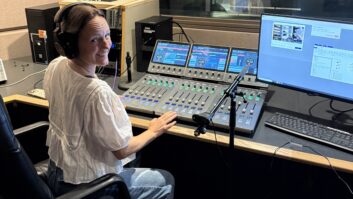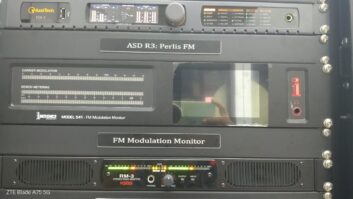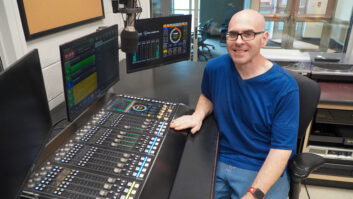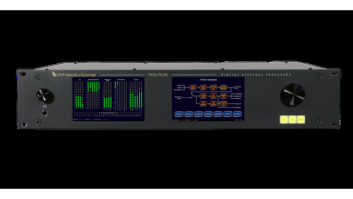This story is excerpted from the ebook “Amazing Radio Studios 2025.”
Converting a national broadcast network to AoIP might be a significant project during ordinary times but it’s another thing to do so during a once-in-a-century pandemic. That was the task facing Malaysia-based JAA Systems (JAA.S) at the onset of COVID-19.

Radio Television of Malaysia is the country’s public broadcaster. RTM operates 23 regional radio networks across Malaysia, which is the 19th largest country in Asia (covering approximately 82% of the area of California for comparison).
As the solutions provider, JAA.S was commissioned to study IP-based solutions for RTM’s radio networks beginning in 2018. It would work with technology from Calrec, with which it had established a relationship two years prior.
Locally, “At the time, IP was still far more talk than reality,” said David Chan, JAA.S’s director. The company looked at the AES67 landscape and explored what an upgrade to IP infrastructure could mean for RTM.
“FM radio is very important across Malaysia,” Chan said, “not only for entertainment but also for information dissemination, including safety alerts, where RTM is the major service provider.”
In 2018, JAA.S built a proof-of-concept studio for RTM using a Calrec Type R mixer along with other third-party technologies. Initially intended for demonstration purposes, the project also served as a valuable educational exercise for the company. “It gave us the confidence we needed,” Chan said.

The first network to receive an upgrade was Perlis FM in 2020, and more contracts followed. The timing, however, was difficult, as the world shut down that March. Not only were travel restrictions in place, but supply chain issues also caused delays. Despite these challenges, Chan said the partners rose to the occasion.
All upgrades were carried out within the same facilities as the older systems. To ensure minimal downtime, backup studios were established during each upgrade.

As of the beginning of 2025, Chan said 75 Calrec Type R cores across eight additional networks had been deployed — in Kedah, Penang, Sabah, Labuan, Pahang, Terengganu, Negeri Sembilan and Melaka. Another 29 Type R cores serving four more networks were to be installed soon, bringing the number of upgraded networks to 13.
Chan’s company designed, supplied, configured and integrated the upgrades. Other contractors specific to each network assisted. Each regional network has its own engineers who were involved with the deployments, supervised by RTM’s project management team, located at RTM headquarters in the Angkasapuri Building in Kuala Lumpur.

Cach regional station consists of two Type R fader panels, with a main console of 16 faders. Each station includes an editing studio with a 12-fader Type R, a recording studio equipped with either a Calrec Type R or Calrec Brio36, a main and backup Type R router and a talk studio with a 12-fader Type R. Currently, there are 192 Calrec Type R fader panels and 104 Calrec Type R cores deployed across RTM.
[Related: “Malaysia’s RTM Uses Inovonics for Its Revamp”]
At most RTM networks, the newly AES67-compliant setups are also anchored by RCS Zetta automation, with headphones from Audio-Technica and microphones from both A-T and Shure. Orban 8700i LT and 5950 audio processors are used.

According to Chan, each studio was given a design refurbishment to reflect local design colors and artwork. Malaysia is composed of 13 states and three federal territories.
JAA.S also provided training to RTM staff and continues to offer support. “We strongly believe this project serves as a reference for broadcasters across the region,” Chan said.
See more stories about new studios in the free Radio World ebook.







